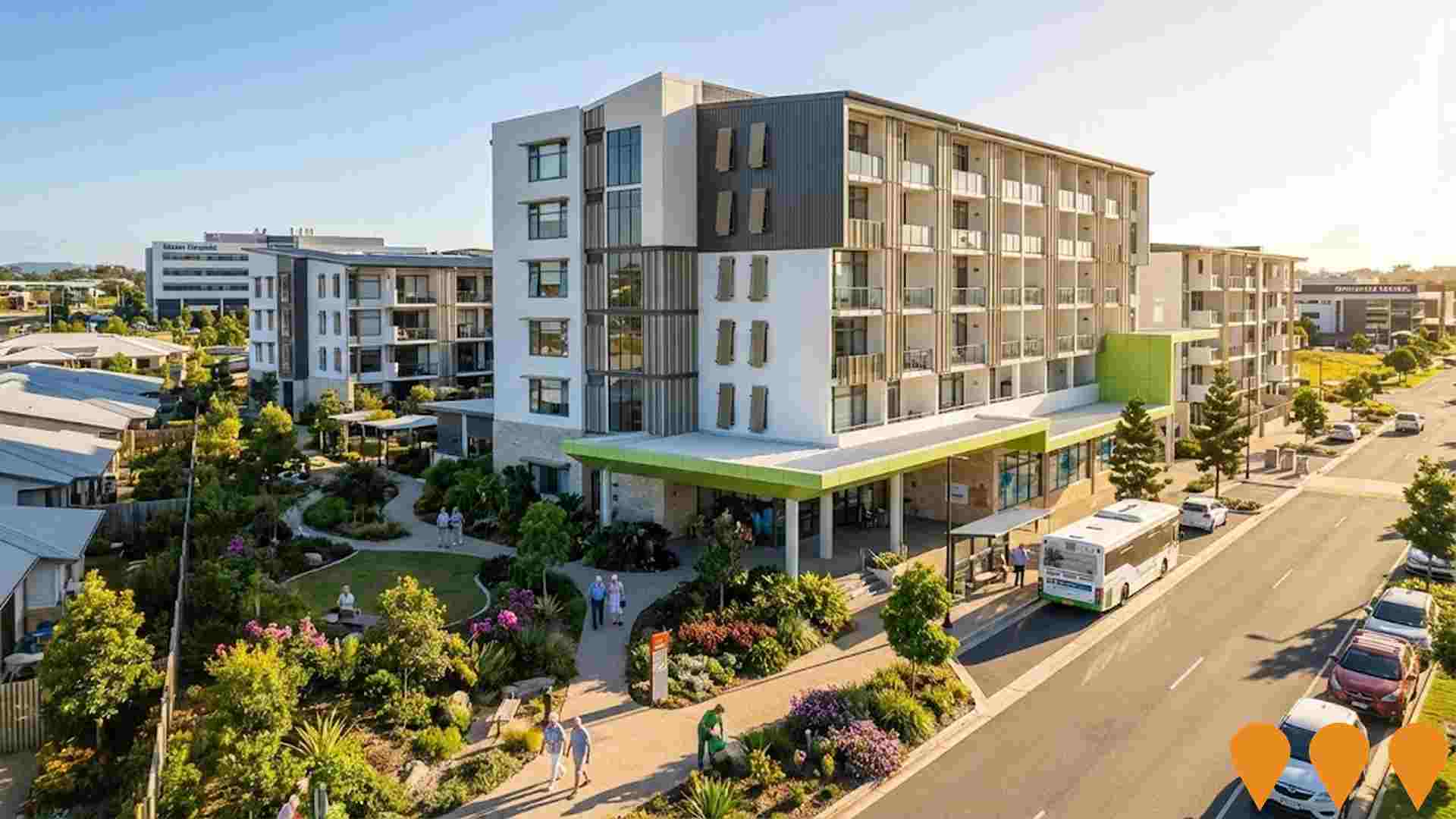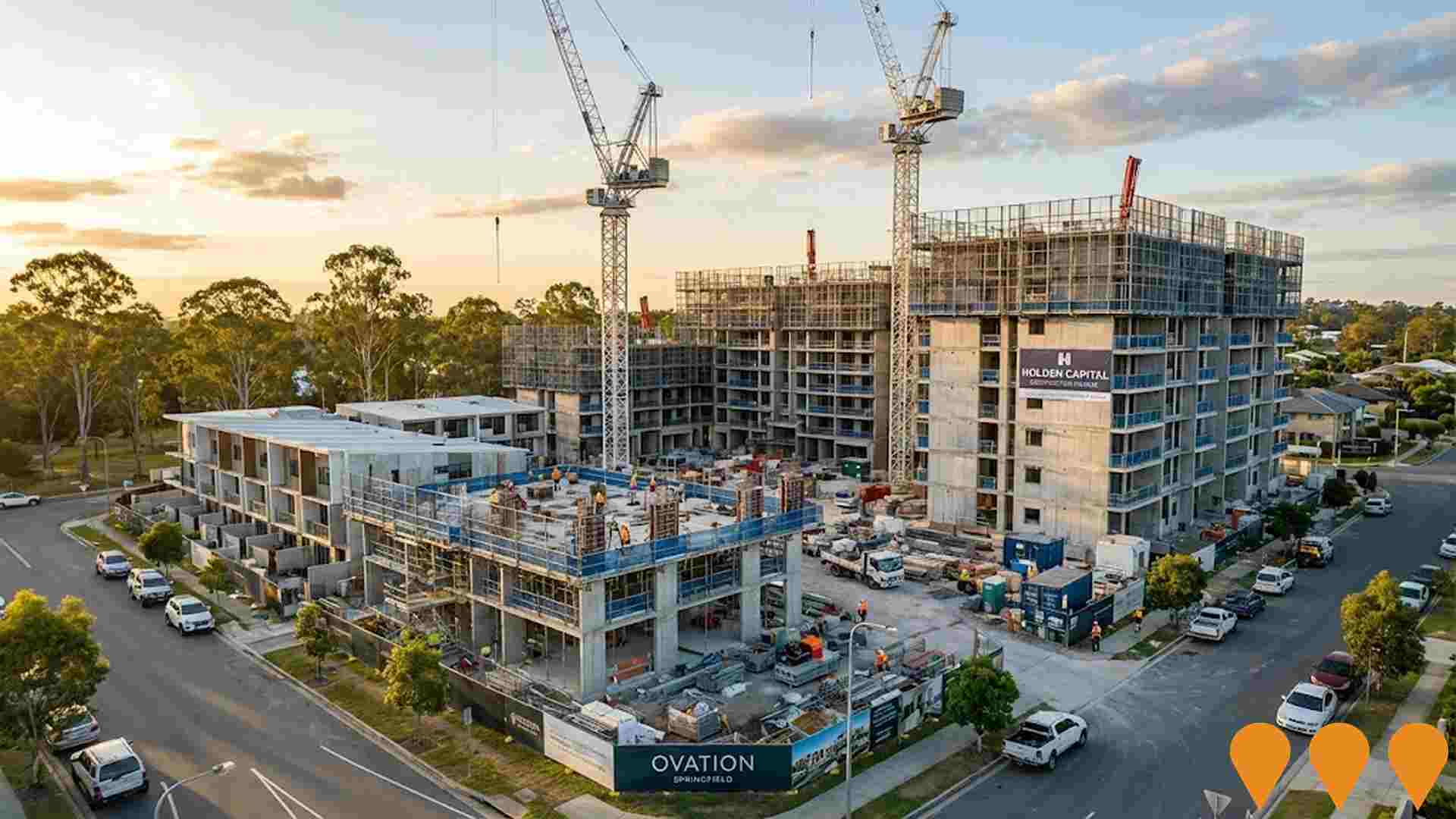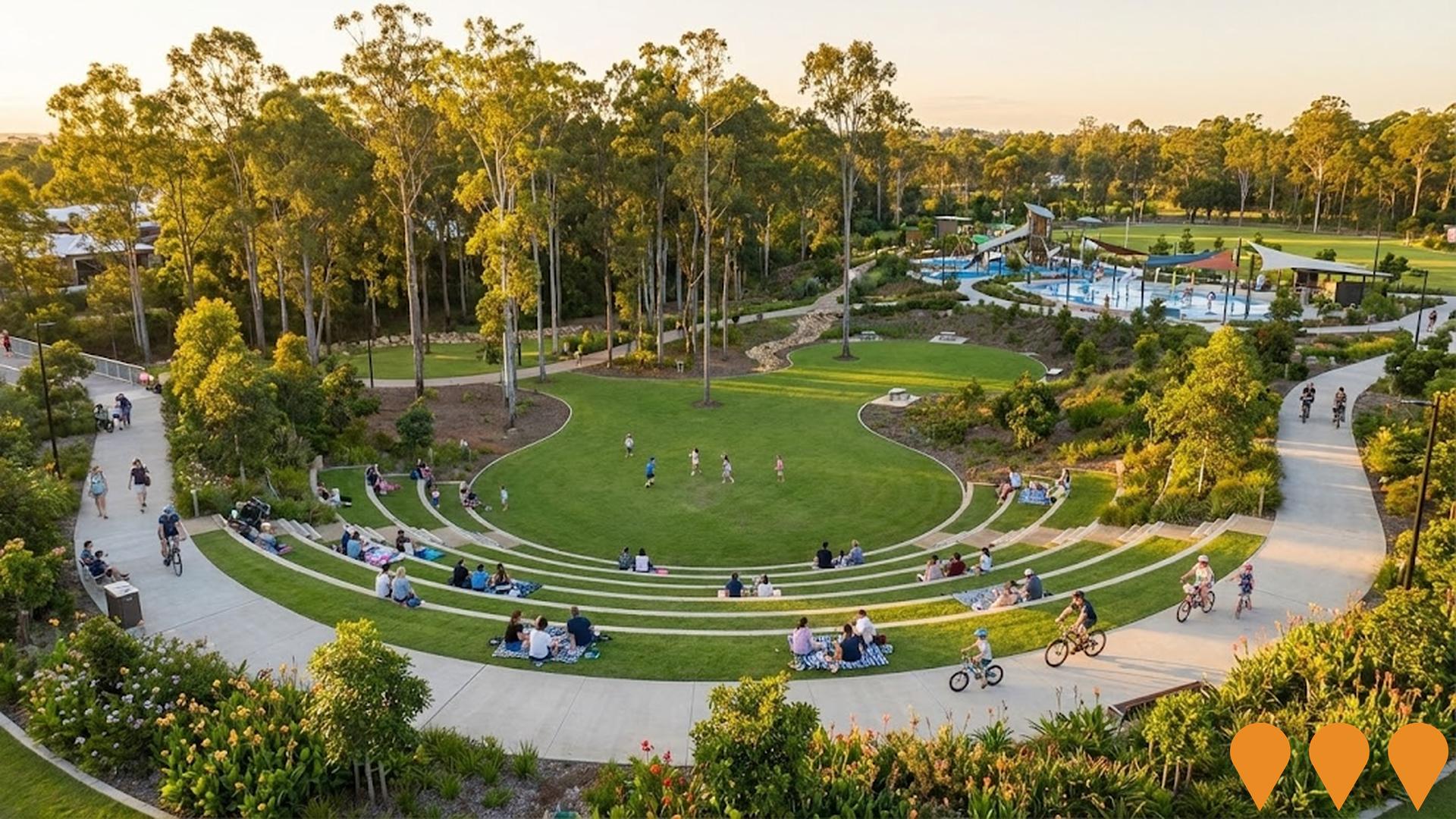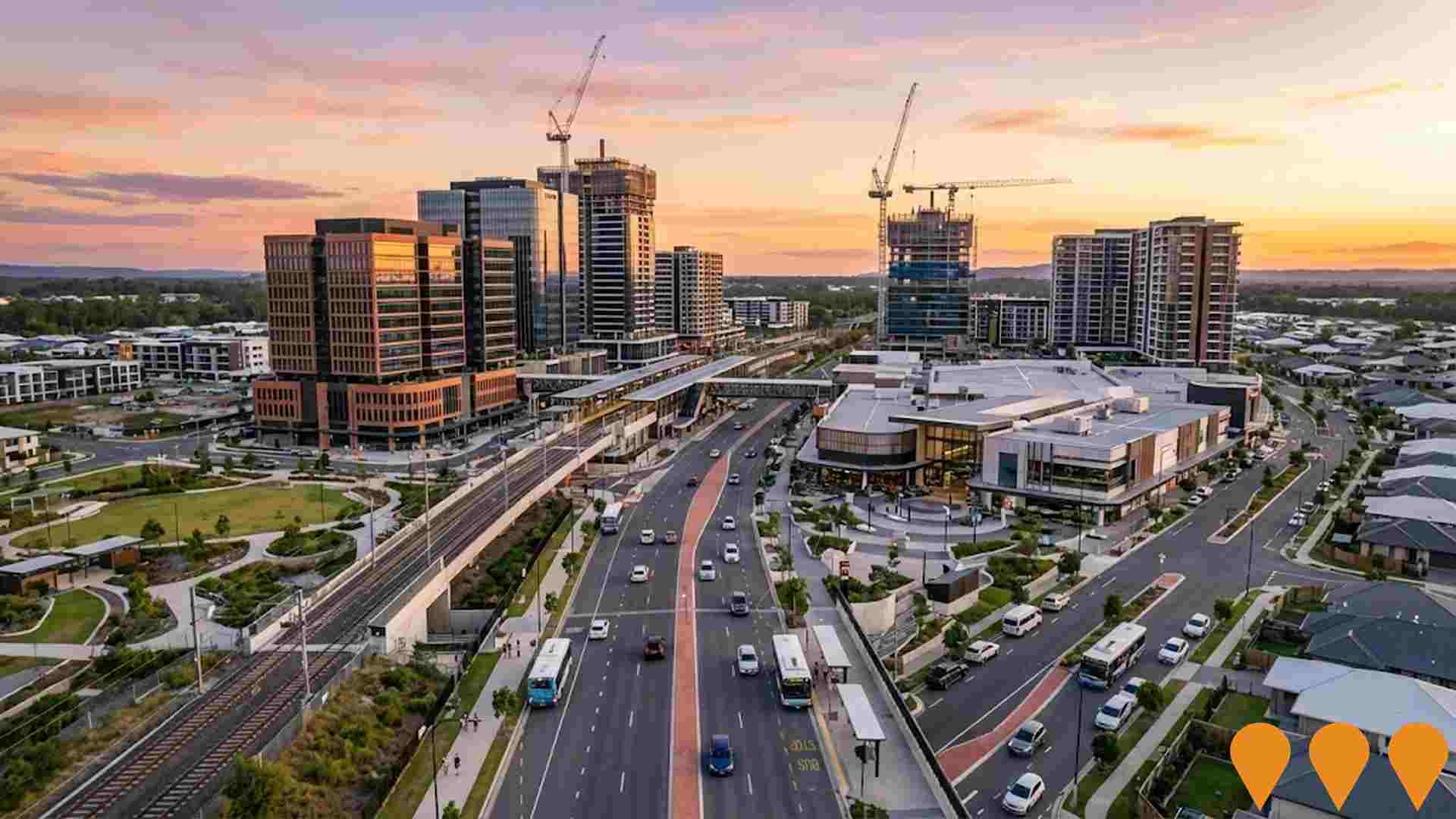Chart Color Schemes
est. as @ -- *
ABS ERP | -- people | --
2021 Census | -- people
Sales Activity
Curious about local property values? Filter the chart to assess the volume and appreciation (including resales) trends and regional comparisons, or scroll to the map below view this information at an individual property level.
Find a Recent Sale
Sales Detail
Population
Springfield Lakes lies within the top 10% of areas nationally in terms of population growth performance according to AreaSearch analysis of short and medium-term trends
Springfield Lakes' population is approximately 28,505 as of November 2025. This figure reflects an increase of 4,979 people since the 2021 Census, which reported a population of 23,526. The change is inferred from the estimated resident population of 28,313 in June 2024 and an additional 1,265 validated new addresses since the Census date. This results in a density ratio of 1,548 persons per square kilometer, above the national average assessed by AreaSearch. Springfield Lakes' growth rate of 21.2% since the 2021 census exceeds both the national average (8.9%) and state averages, marking it as a growth leader in the region. Interstate migration contributed approximately 53.4% of overall population gains during recent periods, with other factors such as natural growth and overseas migration also being positive contributors.
AreaSearch adopts ABS/Geoscience Australia projections for each SA2 area, released in 2024 with 2022 as the base year. For areas not covered by this data and years post-2032, Queensland State Government's SA2 area projections released in 2023 based on 2021 data are adopted. However, these state projections do not provide age category splits; therefore, AreaSearch applies proportional growth weightings in line with the ABS Greater Capital Region projections for each age cohort, released in 2023 based on 2022 data. Looking ahead, exceptional population growth is predicted over the period to 2041, with the area expected to grow by 28,589 persons, reflecting an increase of approximately 99.6% in total over the 17 years.
Frequently Asked Questions - Population
Development
The level of residential development activity in Springfield Lakes was found to be higher than 90% of real estate markets across the country
Springfield Lakes has received approximately 346 dwelling approvals annually. Between FY-21 and FY-25, around 1,733 homes were approved, with an additional 20 approved in FY-26 so far. Each year, on average, 4.2 new residents have been associated with every home built over the past five financial years.
This indicates a significant lag between supply and demand, potentially leading to heightened buyer competition and pricing pressures. The average construction cost of new properties is around $317,000. In FY-26, there have been approximately $55.7 million in commercial approvals, suggesting strong commercial development momentum. Compared to Greater Brisbane, Springfield Lakes has experienced elevated construction levels, with 39.0% above the regional average per person over the past five years.
This is substantially higher than the national average, indicating strong developer confidence in the location. New developments primarily consist of detached houses (97.0%) and townhouses or apartments (3.0%), maintaining the area's suburban nature and attracting space-seeking buyers. The location currently has approximately 77 people per dwelling approval, suggesting an expanding market. By 2041, population forecasts indicate Springfield Lakes will gain around 28,397 residents. If current development rates continue, housing supply may not keep pace with population growth, potentially increasing buyer competition and supporting stronger price growth in the future.
Frequently Asked Questions - Development
Infrastructure
Springfield Lakes has moderate levels of nearby infrastructure activity, ranking in the 46thth percentile nationally
Changes to local infrastructure significantly impact an area's performance. AreaSearch has identified 56 projects likely affecting the region. Notable initiatives include Vicinity Business Park Augustine Heights, Springfield Central State High School Second Senior Campus, University of Southern Queensland Springfield Campus Expansion, and Ovation Springfield. The following list details those most relevant.
Professional plan users can use the search below to filter and access additional projects.
INFRASTRUCTURE SEARCH
 Denotes AI-based impression for illustrative purposes only, not to be taken as definitive under any circumstances. Please follow links and conduct other investigations from the project's source for actual imagery. Developers and project owners wishing us to use original imagery please Contact Us and we will do so.
Denotes AI-based impression for illustrative purposes only, not to be taken as definitive under any circumstances. Please follow links and conduct other investigations from the project's source for actual imagery. Developers and project owners wishing us to use original imagery please Contact Us and we will do so.
Frequently Asked Questions - Infrastructure
Health City Springfield Central
A 52-hectare integrated health, medical research and innovation precinct in Springfield Central. Includes private hospitals, specialist medical centres, allied health, aged care, retirement living (approximately 2,500 apartments), medical office buildings, education and research facilities, wellness centres and supporting commercial and hospitality uses. First stages are now under construction with Pulse Health Hub and Mater Private Hospital Springfield Stage 2 expansion.
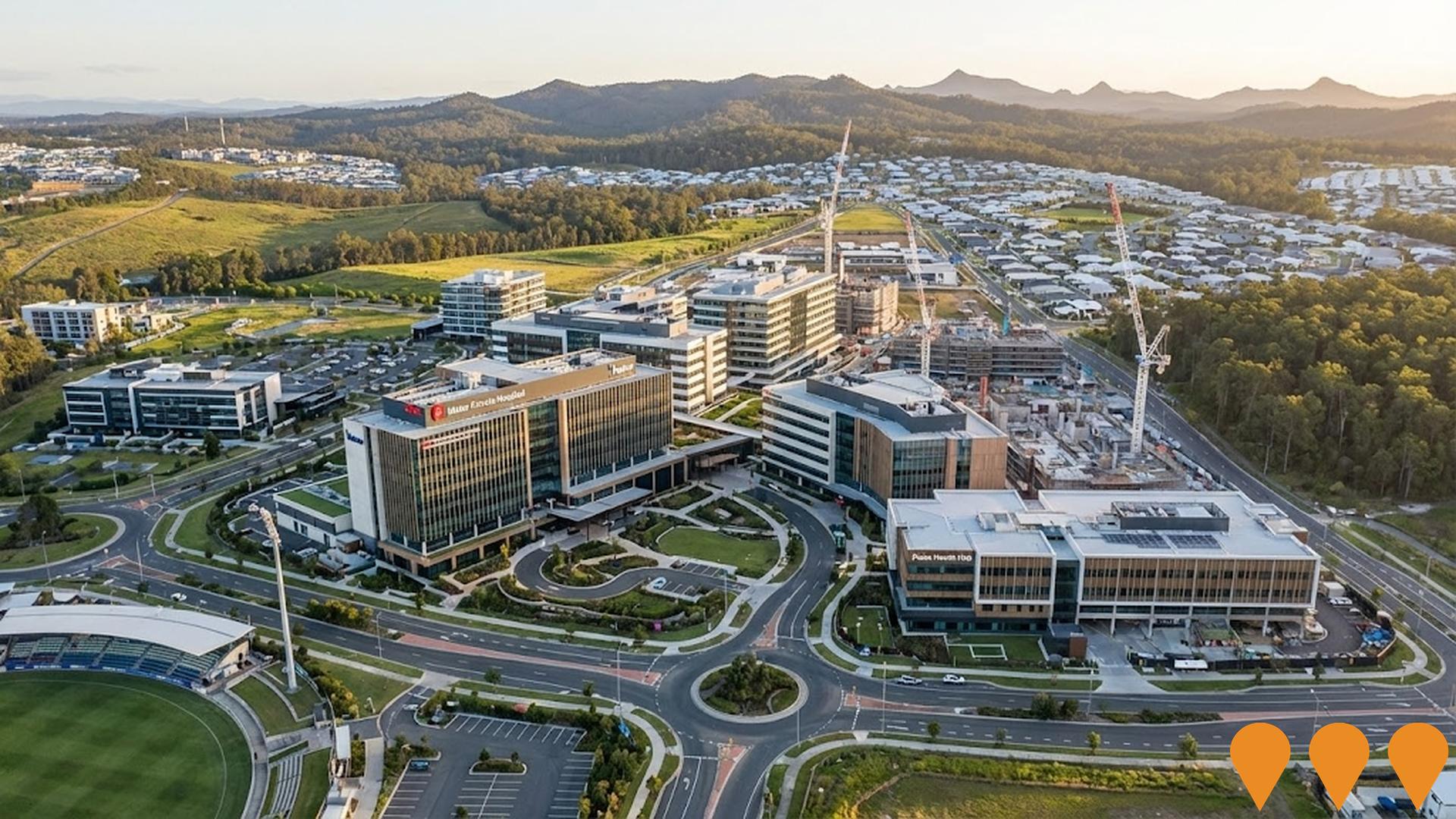
Augustine Heights Master Planned Community
A master-planned residential suburb within the Greater Springfield corridor, comprising established estates like Stockland's 'The Address' and 'The Haven', alongside active infill developments. Ongoing projects include Azure's $60m 'Ember' townhomes (74 dwellings) and JLF Corporation's 'Prema Estate' (97 homes). The community features St Augustine's College, over 47 hectares of open space, and a proposed Vicinity Lifestyle Centre offering 21,320sqm of mixed-use retail and medical facilities.
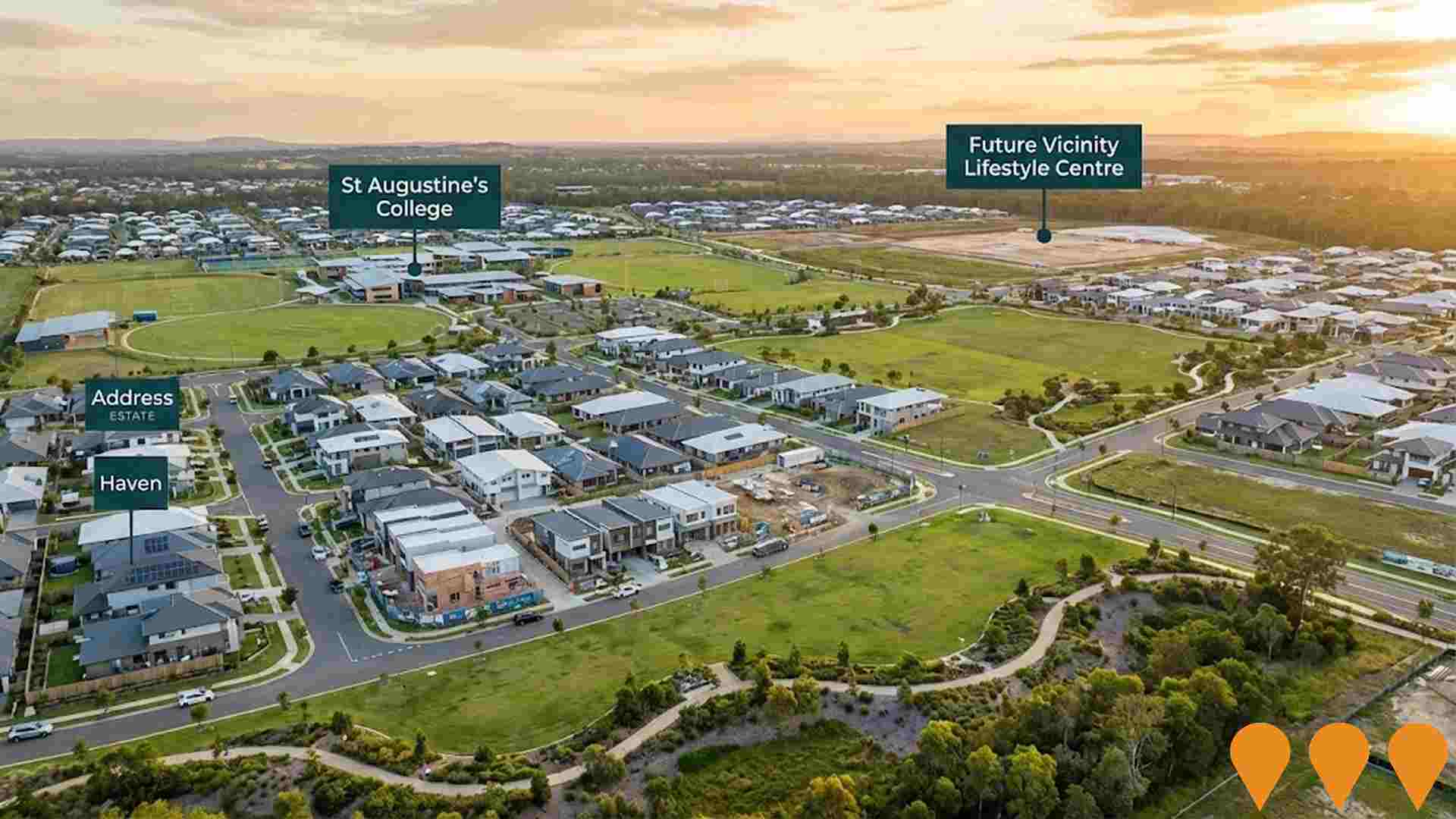
Springfield Grande
A neighbourhood shopping centre anchored by Drakes Supermarket, featuring a full-line supermarket, liquor store, pharmacy, medical centre, allied health, 200-place childcare centre, Snap Fitness gym, service station, JAX Tyres and multiple food and beverage outlets. Now fully complete and trading as the primary retail hub for Springfield Lakes.
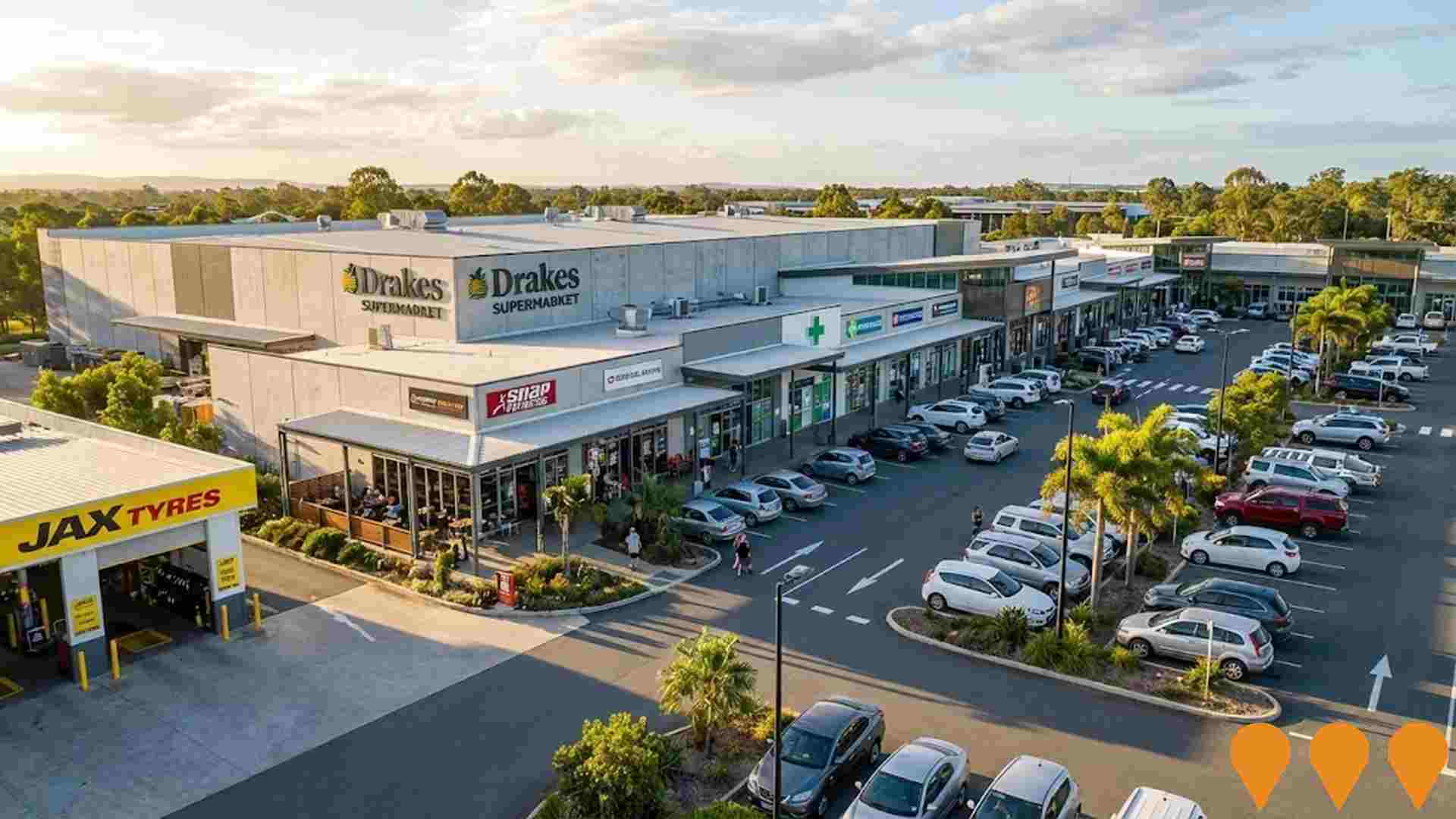
University of Southern Queensland Springfield Campus Expansion
Expansion of USQ Springfield campus including new facilities for engineering, business, and health sciences featuring new academic buildings, student facilities, research centres, and accommodation. Part of Springfield Education City precinct with capacity for 10,000+ students. Designed to increase student capacity and enhance educational offerings in the region. University campus that began classes in 2006 with a four-storey, 9,000 square metre Building B opened in 2015 at a cost of $45 million.
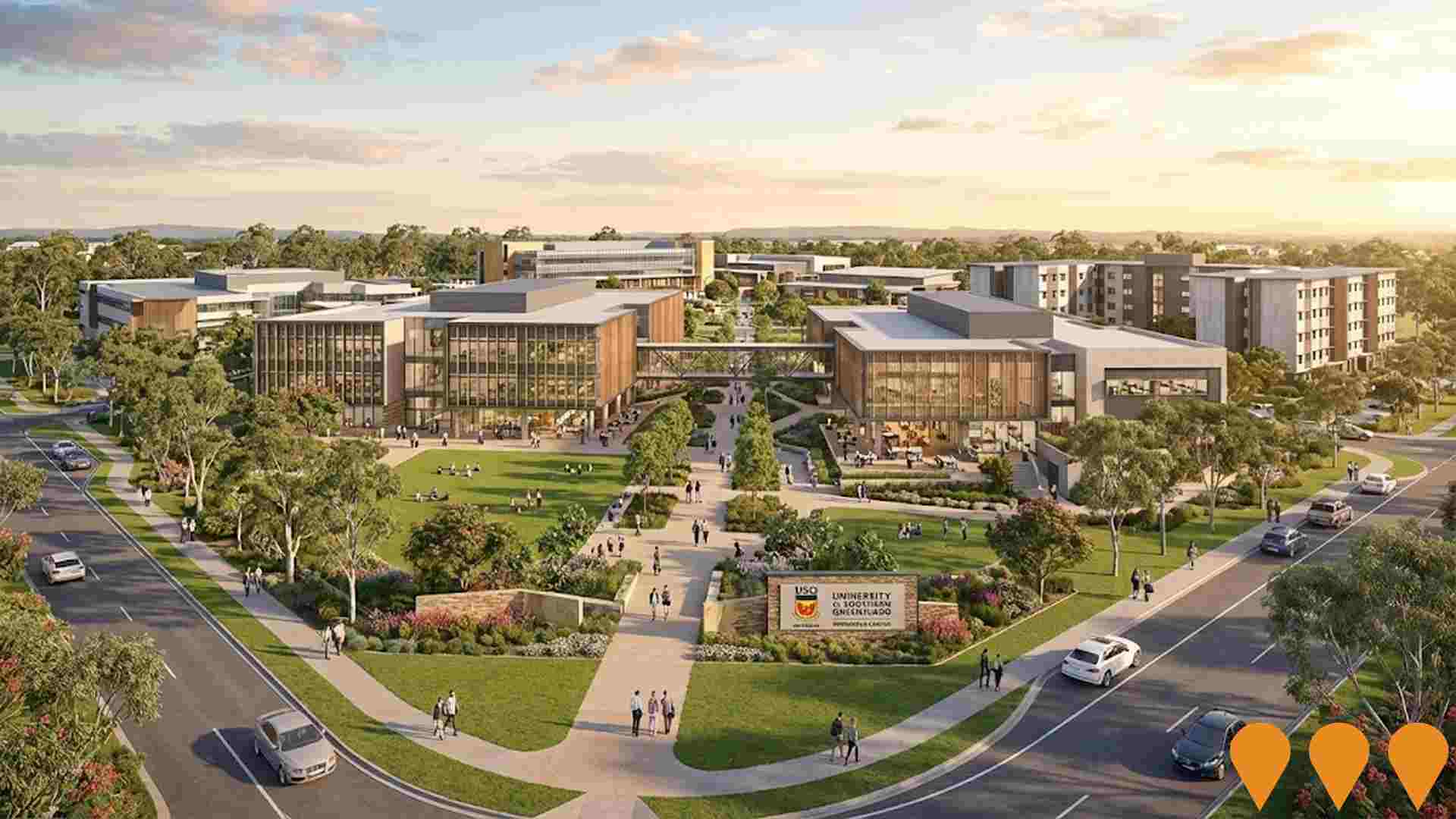
Springfield Rise Master Planned Community
Large master planned community acquired by Stockland and Supalai partnership from Lendlease in November 2024 for $1.3 billion. Part of broader $1.06 billion acquisition of 12 master planned communities. Features The Crossing and Park Lane precincts with premium homesites, parks, and conservation areas. Display Village at 7001 Victoria Way.
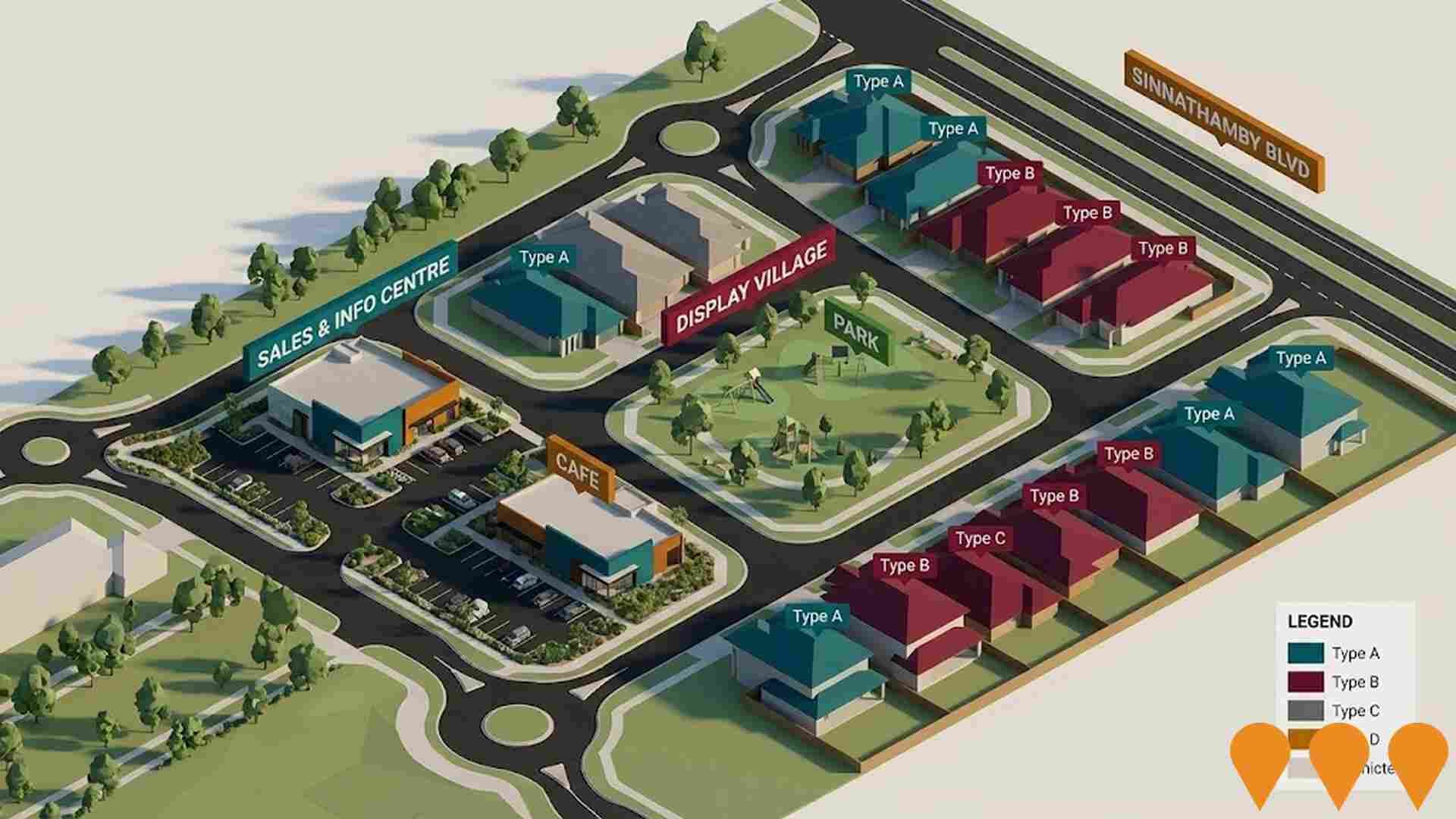
City West Mixed-Use Development Site
A 12.7-hectare town centre zoned mixed-use precinct known as City West, located west of the existing Springfield Central CBD in Greater Springfield. The site was marketed for sale/partnership in 2024 and now has a master Area Development Plan (ADP) lodged with Ipswich City Council in mid-2025. Permissible uses include convenience retail, large format retail, commercial offices, entertainment, leisure, and medium-density residential. Part of Australia's largest masterplanned city, developed by Springfield City Group.
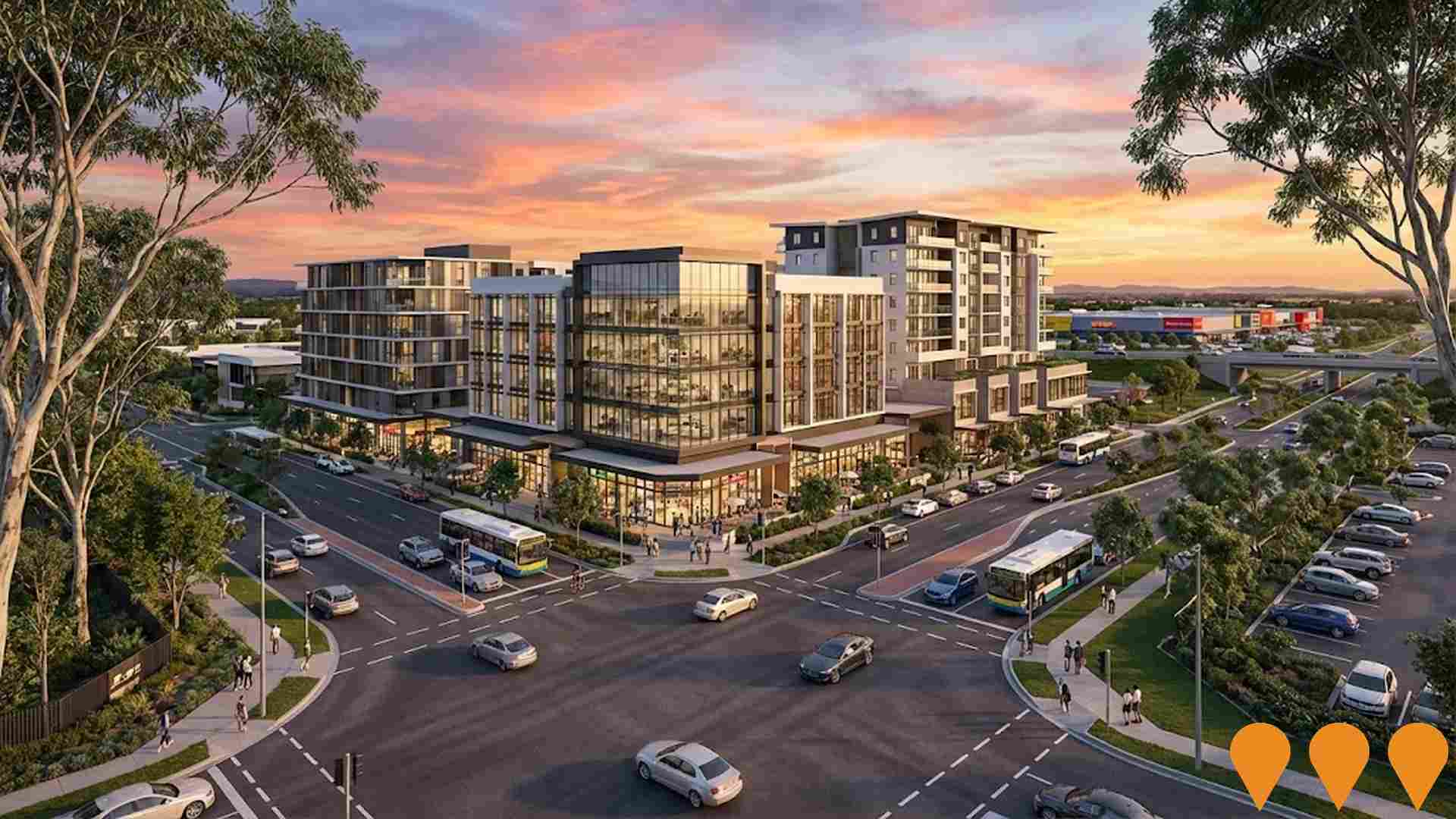
Vicinity Business Park Augustine Heights
A 42-hectare mixed-use business park including major automotive showroom zone and areas for small to medium businesses. Features seven key zones: commercial office, high tech office warehouse, service trade, retail warehouses, showrooms, highway service centre, and fast food convenience.
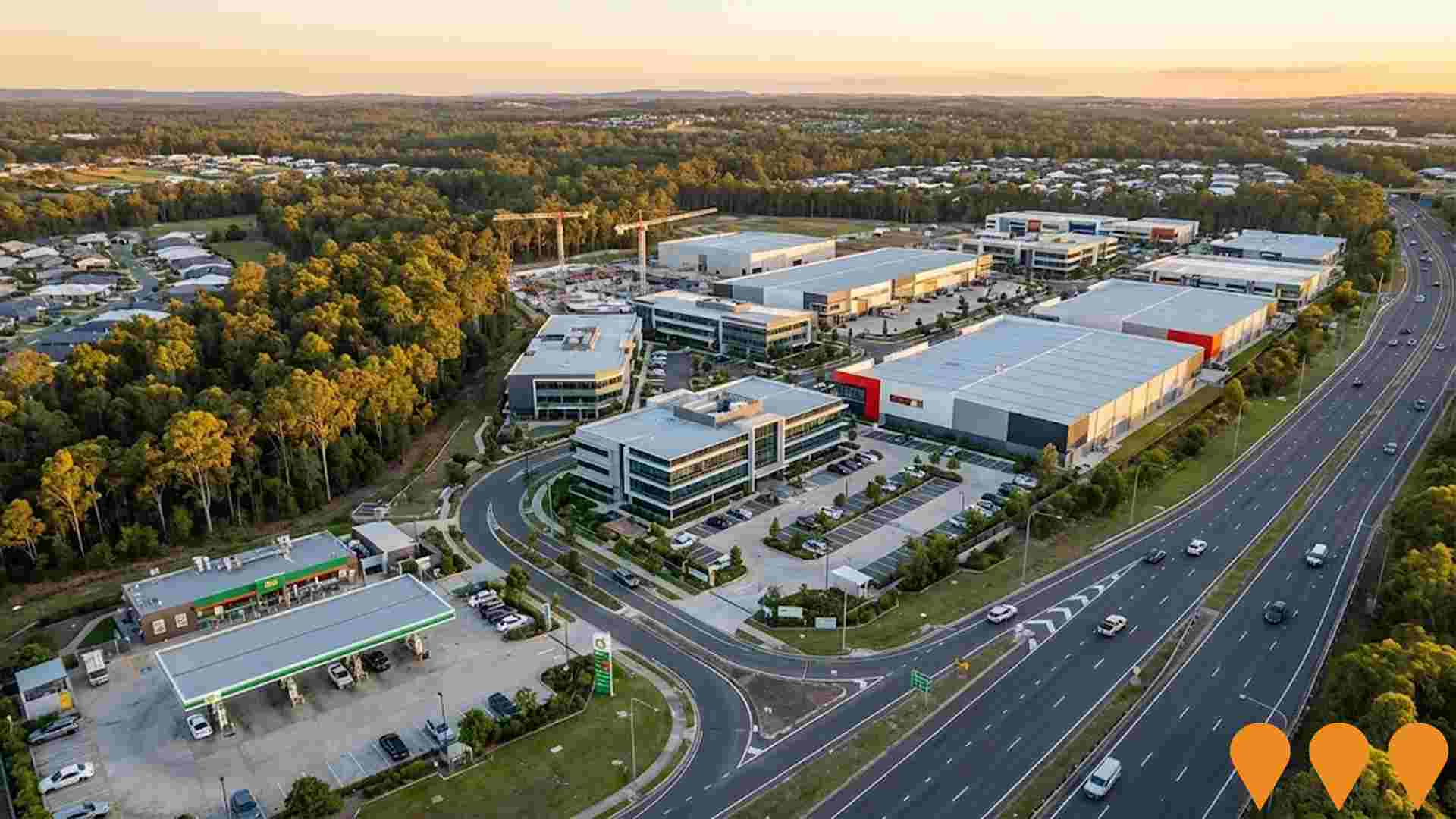
Springfield Central State High School Second Senior Campus
Construction of a second senior campus for Springfield Central State High School (Years 10-12) to double student capacity, featuring several new 6-storey buildings, science laboratories, technology workshops, performing arts centre, and sporting facilities. Designed to accommodate over 2,000 students when completed. The vertical school design is located near the University of Southern Queensland and TAFE Queensland, creating an integrated education hub. Originally planned to open Term 1, 2024, this major infrastructure project addresses rapid population growth in the Greater Springfield area.

Employment
The labour market strength in Springfield Lakes positions it well ahead of most Australian regions
Springfield Lakes has a well-educated workforce with essential services sectors well represented. The unemployment rate was 2.2% in June 2021 and has remained stable over the past year.
As of June 2025, 15,775 residents are employed, with an unemployment rate of 1.9%, lower than Greater Brisbane's rate of 4.1%. Workforce participation is high at 76.2% compared to Greater Brisbane's 64.5%. Leading employment industries include health care & social assistance, public administration & safety, and retail trade. Public administration & safety has a notable concentration with employment levels at 1.5 times the regional average.
Construction, however, is under-represented at 7.0% compared to Greater Brisbane's 9.0%. The area offers limited local employment opportunities as indicated by Census data. Over the year to June 2025, employment increased by 0.2% while labour force increased by 0.2%, keeping unemployment stable. In contrast, Greater Brisbane saw employment growth of 4.4% and labour force growth of 4.0%. Jobs and Skills Australia's national employment forecasts from May 2025 project a 6.6% increase over five years and 13.7% over ten years. Applying these projections to Springfield Lakes' employment mix suggests local growth of approximately 6.5% over five years and 13.6% over ten years, though these are simple extrapolations for illustrative purposes only.
Frequently Asked Questions - Employment
Income
Income metrics indicate excellent economic conditions, with the area achieving higher performance than 75% of national locations assessed by AreaSearch
Springfield Lakes' income level is above the national average according to the latest ATO data aggregated by AreaSearch for the financial year ending June 2022. Springfield Lakes' median income among taxpayers was $59,927 and the average income stood at $68,236. This compares to figures for Greater Brisbane of $55,645 and $70,520 respectively. Based on Wage Price Index growth of 13.99% since June 2022, current estimates would be approximately $68,311 (median) and $77,782 (average) as of September 2025. The 2021 Census data shows household, family, and personal incomes all rank highly in Springfield Lakes, between the 80th and 90th percentiles nationally. The data indicates that the $1,500 - $2,999 income bracket dominates with 45.9% of residents (13,083 people), mirroring the broader area where 33.3% occupy this bracket. High housing costs consume 17.5% of income, however strong earnings place disposable income at the 77th percentile nationally. The area's SEIFA income ranking places it in the 6th decile.
Frequently Asked Questions - Income
Housing
Springfield Lakes is characterized by a predominantly suburban housing profile, with ownership patterns similar to the broader region
Springfield Lakes' dwellings, as per the latest Census, were 95.4% houses and 4.6% other dwellings (semi-detached, apartments, 'other'). Brisbane metro had 88.9% houses and 11.1% other dwellings. Home ownership in Springfield Lakes was 8.7%, with mortgaged dwellings at 48.2% and rented ones at 43.1%. The median monthly mortgage repayment was $1,892, higher than Brisbane metro's $1,710. Median weekly rent was $420 compared to Brisbane metro's $360. Nationally, Springfield Lakes' mortgage repayments were above the Australian average of $1,863, and rents were substantially higher than the national figure of $375.
Frequently Asked Questions - Housing
Household Composition
Springfield Lakes features high concentrations of family households, with a higher-than-average median household size
Family households constitute 84.3% of all households, including 48.6% couples with children, 20.8% couples without children, and 14.0% single parent families. Non-family households account for the remaining 15.7%, with lone person households at 13.0% and group households comprising 2.6%. The median household size is 3.1 people, larger than the Greater Brisbane average of 3.0.
Frequently Asked Questions - Households
Local Schools & Education
Springfield Lakes shows strong educational performance, ranking in the upper quartile nationally when assessed across multiple qualification and achievement indicators
Springfield Lakes' residents aged 15+ exceed broader benchmarks in educational attainment. 31.1% hold university qualifications, compared to 18.8% in the SA4 region and 20.6% in the SA3 area. Bachelor degrees are most prevalent at 20.5%, followed by postgraduate qualifications (7.8%) and graduate diplomas (2.8%). Vocational credentials are also prominent, with 36.4% of residents holding such qualifications - advanced diplomas at 12.8% and certificates at 23.6%.
Educational participation is high, with 35.8% currently enrolled in formal education. This includes 13.7% in primary, 9.1% in secondary, and 5.5% in tertiary education. Seven schools operate within Springfield Lakes, educating approximately 6,788 students. The area's socio-educational conditions are above average (ICSEA: 1052). The educational mix includes four primary, one secondary, and two K-12 schools.
Frequently Asked Questions - Education
Schools Detail
Nearby Services & Amenities
Transport
Transport servicing is moderate compared to other areas nationally based on assessment of service frequency, route connectivity and accessibility
The analysis of public transport in Springfield Lakes shows that there are 65 active transport stops currently operating. These stops serve a mix of bus routes, with a total of 6 individual routes providing service. Each week, these routes facilitate 2,320 passenger trips collectively.
The accessibility to transport is rated as good, with residents typically residing within 290 meters from the nearest transport stop. On average, there are 331 trips per day across all routes, which equates to approximately 35 weekly trips per individual stop.
Frequently Asked Questions - Transport
Transport Stops Detail
Health
Springfield Lakes's residents boast exceedingly positive health performance metrics with common health conditions somewhat prevalent across both younger and older age cohorts
Health outcomes data shows Springfield Lakes has notable results with common health conditions prevalent across both younger and older age groups. Approximately 54% of the total population (~15,307 people) have private health cover, compared to 50.3% in Greater Brisbane.
Mental health issues and asthma are the most common medical conditions, affecting 8.0 and 7.2% of residents respectively. Around 77.9% of residents report no medical ailments, compared to 72.4% in Greater Brisbane. As of 2021, 5.8% of residents are aged 65 and over (1,639 people), lower than the 8.8% in Greater Brisbane. Health outcomes among seniors require more attention than the broader population.
Frequently Asked Questions - Health
Cultural Diversity
Springfield Lakes is among the most culturally diverse areas in the country based on AreaSearch assessment of a range of language and cultural background related metrics
Springfield Lakes has a notable cultural diversity, with 31.4% of its population speaking languages other than English at home and 38.3% born overseas. Christianity is the predominant religion in Springfield Lakes, comprising 39.8% of the population. The most significant overrepresentation was seen in the 'Other' category, which constituted 4.4% of the population compared to 2.1% across Greater Brisbane.
Regarding ancestry, the top three represented groups were English (22.4%), Australian (20.2%), and Other (15.3%). There were also notable differences in the representation of certain ethnic groups: Maori was overrepresented at 2.3%, Samoan at 2.2%, and Indian at 7.1%.
Frequently Asked Questions - Diversity
Age
Springfield Lakes hosts a very young demographic, ranking in the bottom 10% of areas nationwide
Springfield Lakes has a median age of 32 years, which is lower than the Greater Brisbane average of 36 and significantly below the Australian median of 38. Compared to Greater Brisbane, Springfield Lakes has a higher proportion of residents aged 35-44 (20.9%) but fewer residents aged 65-74 (3.3%). This concentration of 35-44 year-olds is notably above the national average of 14.2%. Between 2021 and present, the proportion of residents aged 45 to 54 has increased from 11.1% to 12.2%, while the 35 to 44 age group has risen from 19.9% to 20.9%. Conversely, the proportion of residents aged 25 to 34 has decreased from 18.1% to 14.8%, and the 0 to 4 age group has dropped from 9.6% to 8.5%. By 2041, demographic modeling projects significant changes in Springfield Lakes's age profile. The 45 to 54 age cohort is projected to expand substantially, with an increase of 5,443 people (156%), from 3,480 to 8,924 residents.
